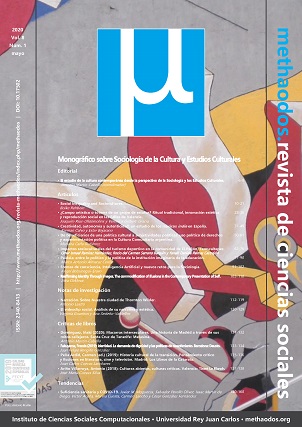Reaffirming Identity Through Images. The commodification of Illusions in the Contemporary Presentation of Self
Main Article Content
Abstract
In this paper, the construction of an ideal image of the self will be discussed within the theoretical framework of “Representation”. Drawing more on Hall’s concept of representation I would like to concentrate on the practices of “stereotyping”, drawing out the links between representation and stereotype that are closely connected with the production of mass culture, consumerism, institutions, and social media. Photos from galleries and museums and heritage locations taken and shared on social media can be understood as a commodified presentation of the tourist experience of an attractive location that has come into existence in order to narrate an ideal trip. After a picture is shared on social networks, the process of the commodification of an illusion starts − an illusion that was shared and presented as a personal authentic proof of the visit to the location and experiencing a unique moment. Often one particular image from a museum is massively reproduced and becomes a form of an ideal souvenir or a goal of travel. The connection of the centrality of the location captured in images, stereotyping, and identity is crucial in this research. The aim of this text is to understand the current trends of enhancing identity via creating and consuming images and portraits. It also aims to address the changing patterns and techniques of visual self-presentation, pointing out shared cultural values that are becoming certain global standards and institutionalized conventions of the personal and professional commercial photography.
Downloads
Article Details
References
Bauman, Z. (2013): Liquid Times. Oxford: Wiley.
Benjamin, W. (1969 [1936]): “The Work of Art in the Age of Mechanical Reproduction”, en Arendt, H. ed.: Illuminations: 217-251. New York: Schocken.
Baudrillard, J. (1994): Simulacra and simulation. Ann Arbor: University of Michigan Press.
Baumeister, R. & Leary, M. (1995): “The Need to Belong: Desire for Interpresonal Attachments as a Fundamental Human Motivation”, Psychological Bulletin, 117(3): 497-529. https://psycnet.apa.org/doi/10.1037/0033-2909.117.3.497
Bryman, A. (2004): The Disneyization of society. London: SAGE.
Campbell, C. (1987): The romantic ethic and the spirit of modern consumerism. Oxford, UK & New York, NY, USA: B. Blackwell.
Di Pietro, L., Mugion, R.G. & Renzi, M.F. (2018): “Heritage and identity: technology, values and visitor experiences”, Journal of Heritage Tourism, 13 (2): 97-103. https://doi.org/10.1080/1743873X.2017.1384478
Goffman, E. (1975): Frame analysis. Cambridge Mass.: Harvard University Press.
— (1979): Gender advertisements. New York: Harper and Row.
Hall, S. ed. (1997): Representation: cultural representation and signifying practices. London: Sage-The Open University Press.
— (1980): “Recent developments in theories of language and ideology: A critical note”, en Culture, media, language: Working papers in cultural studies. London & Birmingham, UK: Hutchinson-University of Birmingham.
Khamis, S. & Ang, L. (2017): “Self-branding, `micro-celebrity` and the rise of Social Media Influencers”, Celebrity Studies, 8 (8): 191-208. https://doi.org/10.1080/19392397.2016.1218292
Kellner, D. (2003): Media spectacle. London: Routledge.
Pospěch, T. (2010): Česká fotografie 1938-2000 v recenzích, textech, dokumentech. Hranice: Dost.
Simmel, G. (2018): Rembrandt. Umelecko-filozofická esej: Akamedia.

